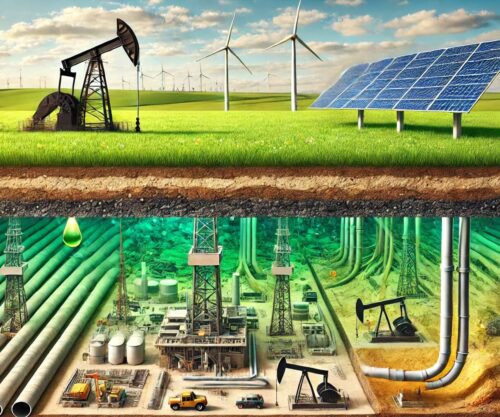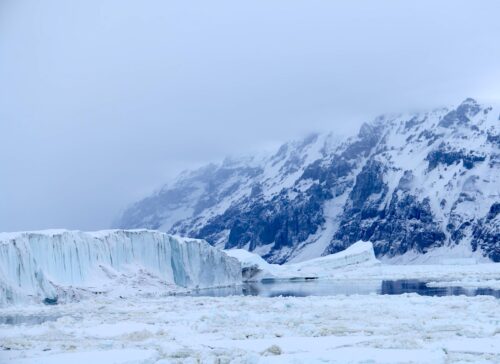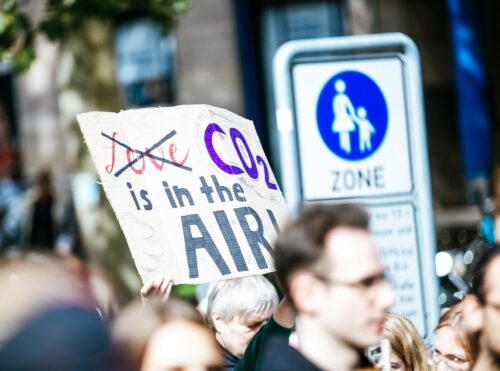 To read Part II, click here.
To read Part II, click here.
In a remarkable essay last week titled, “We’re Getting a Clearer Picture of the Climate Future — and It’s Not as Bad as It Once Looked,” David Wallace-Wells of New York Magazine wrote, “the climate news might be better than you thought. It’s certainly better than I’ve thought.”
The essay was remarkable because Wells, a self-described “alarmist,” is also the author of The Uninhabitable Earth, which describes an apocalyptic vision of the future, dominated by “elements of climate chaos.”
According to Wallace-Wells, his new-found optimism was the result of learning that much discussion of climate change is based on extreme but implausible scenarios of the future where the world burns massive amounts of coal.
The implausibility of such scenarios is underscored by more recent assessments of global energy system trajectories of the International Energy Agency and United Nations, which suggest that carbon dioxide emissions from the burning of fossil fuels will be relatively flat over the next several decades, even before aggressive climate policies are implemented.
Scenarios of the future have long sat at the center of discussions of climate science, impacts and adaptation and mitigation policies.
Scenario-planning has a long history and can be traced to the RAND Corporation during World War 2 and, later (ironically enough) Shell, a fossil fuel company.
Scenarios are not intended to be forecasts of the future, but rather to serve as an alternative to forecasting. Scenarios provide a description of possible futures contingent upon various factors, only some of which might be under the control of decision-makers.
The climate community got off track by forgetting the distinction between using scenarios as an exploratory tool for developing and evaluating policy options and using scenarios as forecasts of where the world is headed.
The scenario (or more precisely, the set of scenarios) that the climate community settled on as a baseline future for projecting future climate impacts and evaluating policy options biases how we think about climate impacts and policy responses.
The point is not that climate analysts should have chosen a more realistic future as a baseline expectation, but rather, they should never have chosen a particular subset of futures for such a baseline.
The desire to predict the future is perfectly understandable. In climate science, scenarios were transformed from alternative visions of possible futures to a subset of predicted futures through the invention of a concept called “business as usual.”
The Intergovernmental Panel on Climate Change (IPCC) explains that “business as usual” is “synonymous” with concepts such as “baseline scenario” or “reference scenario” or “no-policy scenario.”
The IPCC used the concept of “business as usual” (and equivalencies) in the 1990s, and then explicitly rejected it in the 2000s. It has returned with a vengeance in the 2010s. A reset is needed for the 2020s.
According to the IPCC, a “baseline” scenario refers to “the state against which change is measured” and for climate impacts and policy, is “based on the assumption that no mitigation policies or measures will be implemented beyond those that are already in force and/or are legislated or planned to be adopted.”
The use of such a baseline is far more important for research on climate impacts and policy than it is for most research on the physical science of climate, as the latter need not necessarily be tied to socio-economic scenarios.
The IPCC warns, quite appropriately:
“Baseline scenarios are not intended to be predictions of the future, but rather counterfactual constructions that can serve to highlight the level of emissions that would occur without further policy effort. Typically, baseline scenarios are then compared to mitigation scenarios that are constructed to meet different goals for greenhouse gas (GHG) emissions, atmosphereic (sic) concentrations, or temperature change.”
Cost-benefit and effectiveness analyses, in particular, lend themselves to using a fixed baseline against which to evaluate an alternative, creating an incentive for the misuse of scenarios as predictions.
The IPCC cautions against treating scenarios as predictions because they reach far into the future – for instance to 2100 and even beyond, and “the idea of business-as-usual in century-long socioeconomic projections is hard to fathom.”
Humility in socioeconomic predictions is also warranted because our collective track record in anticipating the future, especially when it comes to energy (Amazon), is really quite poor.
It may seem confusing for the IPCC to recommend the use of baseline scenarios as a reference point for evaluating counterfactual futures and its parallel warning not to use reference scenarios as forecasts.
The way for analysts to reconcile these two perspectives is to consider in research a very wide range of counterfactual futures as baselines.
The instant an analyst decides that one particular scenario or a subset of scenarios is more likely than others, and then designates that subset of possible futures as a baseline or “business as usual,” then that analyst has started crossing the bridge to predicting the future.
When a single scenario is chosen as a baseline, that bridge has been crossed.
There is of course generally nothing wrong with predicting the future as a basis for decision-making. Indeed, a decision is a form of a prediction about the future.
However, in some contexts, we may wish to rely more on decision making that is robust to ignorance and uncertainties (and thus less on forecasts), that might lead to desired outcomes across all scenarios of the future.
For instance, if you build a house high on a bluff above a floodplain, you need not worry about flood predictions. In other settings, we may wish to optimize decisions based on a specific forecast of the future, such as evacuation before an advancing storm.
Climate science — and by that, I mean broadly research on physical science, impacts, economics as well as policy-related research into adaptation and mitigation — went off track when large parts of the community and leading assessment bodies like the IPCC decided to anoint a subset of futures (and one in particular) as the baseline against which impacts and policy would be evaluated.
This is best illustrated by a detailed example.
The U.S. National Climate Assessment (NCA) is a periodic report on climate science and policy required in law. The most recent report was published in two parts in 2017 and 2018.
Those reports were centered on anointing a specific scenario of the future as “business as usual” (despite the NCA warning against doing exactly that). That scenario has a technical name, Representative Concentration Pathway (RCP) 8.5.
In his climate epiphany, David Wallace-Wells warned, “anyone, including me, who has built their understanding on what level of warming is likely this century on that RCP8.5 scenario should probably revise that understanding in a less alarmist direction.”
The climate science community, broadly conceived, is among those needing to revise their understandings.
To illustrate how the USNCA came to be centered on RCP8.5, let’s take a quick deep dive into how the report was created.
Its use of scenarios was grounded in research done by the U.S. Environmental Protection Agency (EPA) and specifically a project called Climate Change Impacts and Risk Analysis. That project is described in two reports.
The first report, in 2015, explained that its methodology was based on two scenarios, a “business as usual” or “reference” scenario that projected where the world was heading in the absence of climate policies and a “mitigation” scenario representing a future with emissions reductions.
In that report, EPA created its own scenarios (with its BAU scenario equated to an equivalent RCP8.6 scenario). The report explained that the benefits of mitigation policy were defined by the difference between the BAU scenario and the mitigation scenario.
In its subsequent report in 2017, EPA decided to replace its scenarios with several of the RCP scenarios used by the IPCC. In that report, it dropped the phrase “business as usual” and adopted RCP8.5 as its “baseline” scenario fulfilling that role.
It adopted another scenario, RCP4.5 as representing a world with mitigation policy. The USNA relied heavily on the results of this research, along with other work using RCP8.5 as a “baseline.”
The USNCA defined the difference in impacts between the two RCP scenarios as representing the benefits to the United States of mitigation policy:
“Comparing outcomes under RCP8.5 with those of RCP4.5 (and RCP2.6 in some cases) not only captures a range of uncertainties and plausible futures but also provides information about the potential benefits of mitigation.”
But such a comparison was warned against by the creators of the RCP scenarios: “RCP8.5 cannot be used as a no-climate-policy reference scenario for the other RCPs.” Yet, there it was at the center of the most authoritative climate science report in the United States.
Reports are written by committees, and elsewhere the US NCA warned that RCP8.5 “is not intended to serve as an upper limit on possible emissions nor as a BAU or reference scenario for the other three scenarios.”
But that warning was not heeded at all. RCP8.5 is used as a reference scenario throughout the report and is mentioned more than 470 times, representing about 56% of all references to RCP scenarios.
It was the USNCA misuse of RCP8.5 that appeared on a page-one New York Times story that warned:
“A major scientific report issued by 13 federal agencies on Friday presents the starkest warnings to date of the consequences of climate change for the United States, predicting that if significant steps are not taken to rein in global warming, the damage will knock as much as 10 percent off the size of the American economy by century’s end.”
It is not just the USNCA that has centered its work on RCP8.5 as a reference scenario to evaluate climate impacts and policy, the 2019 IPCC report on oceans and ice also adopted RCP8.5 as a reference scenario to compare with RCP2.6 as a mitigation scenario:
“Under unmitigated emissions (RCP8.5), coastal societies, especially poorer, rural and small islands societies, will struggle to maintain their livelihoods and settlements during the 21st century.”
That report referenced RCP8.5 more than 580 times representing more than 56% of all scenario references in the report.
Across the IPCC 5th assessment report, published in 2013 and 2014, RCP8.5 comprised 34% of scenario references. Dependence on RCP8.5 has increased in the reports of IPCC.
And as an indication of where research may be heading, in the abstracts talks given at the 2019 meeting of the American Geophysical Union earlier this month, of those that mentioned RCP scenarios, 58% mentioned RCP 8.5, with RCP4.5 coming in second at 32%.
If these abstracts indicate the substance of future scientific publications, then get ready for an avalanche of RCP8.5 studies.
The climate science community, despite often warning itself to the contrary, has gotten off track when it comes to the use of scenarios in impact and policy research.
There can be little doubt that major assessments and a significant portion of the underlying literature have slipped into misusing scenarios as predictions of the future.
Why this has happened will no doubt be the subject of future research, but for the immediate future, the most important need will be for the climate science community to hit the reset button and get back on track. Climate change is too important to do otherwise.
Part two will discuss what this reset might look like.
Roger Pielke Jr. has been a professor at the University of Colorado since 2001. Previously, he was a staff scientist in the Environmental and Societal Impacts Group of the National Center for Atmospheric Research. He has degrees in mathematics, public policy, and political science, and is the author of numerous books. (Amazon).
Read more at Forbes Blogs



















Noting for the facts that back in the 1970’s the same liberal rag like Time was going on about Global Cooling and New Ice Age theres a episode of the TV seies IN SEARCH OF it has all about the New Ice Age and even about the hard winter of 176/77 where Buffalo N.Y. got 44 consecutive days of snow
A reset away from the false notion of the existence of a climate emergency would be great, BUT
(1) how is the heavily biassed mainstream media going to be reset? They are the ones directly fuelling the public hysteria
(2) If scientists continue to chase CO2 as the imaginary cause of a problem that doesn’t exist, then we will continue to be hounded by big climate money and green capitalists spruiking a major panic that we must act on NOW. An the political parties and activists groups they fund will continue joining in on that song too. There are big economies constructed over the hoax now, and that’s part of the cement that binds us to the lie.
Plenty of scientists have been saying for plenty of years that there is no climate emergency – no one has been listening.
Why are we tying temperature prediction to emissions? Is there any valid reason to believe that our emissions control temperature that has not been falsified by Salby, Harde , and Berry? Has anyone demonstrated any correlation between our emissions and temperatures? If these three scientists are right our emissions don’t even control atmospheric CO2 which is, according to them, nearly entirely naturally controlled mostly by temperature. It seems to me there should be much more effort aimed at falsifying their findings than guessing how much warming we are causing by guessing how much fossil fuel we will burn and guessing how much of that CO2 will add to the atmospheric content. If they can’t be falsified the pursuit of emissions sensitivity or emissions control is entirely wasted effort and the activists that are predicting our doom will continue their perfect record of failure.
An even bigger problem is that their “scenarios” are all total BS anyway, as their forecasts rely on models that are demonstrably complete garbage that wildly overestimates the extent of future temperature changes due to the increase of CO2 in the atmosphere. The entire exercise has only one aim: to create a climate of fear in which people accept more looting by the State and further restrictions of economic freedom.
And all this predicated STILL on the utter BS that CO2 is a “pollutant”, heating the Planet and harmfull to our climate.
Only when all the Religious like Climatista’s of the plant take into account, the SUN and its radiative variations + Orbital Mechanics….THEN only then can we have a REAL and SERIOUS discussion regarding the Planets Climate.
For now its TOTAL hysteria based on massaged data + computer modelas that are being used to urtherr Agendas that have SFA to do with Climate and everything to do with lightening ouar wallets.